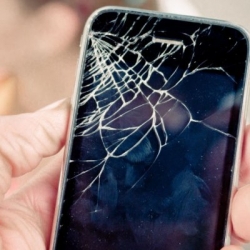The Role of Packaging Design in Consumer Purchase Decisions
Packaging design is paramount in influencing consumer purchase decisions in the modern marketplace, where consumers are presented with diverse choices. Packaging is often the first point of contact between the consumer and the product, and it can significantly impact the attractiveness and perceived value of the product. We will delve into the diverse aspects of packaging design and how it influences consumer behavior, purchasing decisions, and, ultimately, the success of a product in the market.
Introduction to Packaging Design and Consumer Behavior
Packaging design proposes the creation of the exterior of a product. It encloses choices in material, form, color, imagery, typography, structural design, and informational content about the product. Good packaging protects the product and communicates a brand's message and values. It recreates a pivotal role in branding and can be a key factor in setting a product apart from its competitors. Consumer behavior concerning packaging implicates a complex set of psychological and emotional responses. The visual appeal of packaging can evoke emotions, attract attention, and convey messages that resonate with the consumer's values and desires. The packaging communicates a brand's identity and can influence the consumer's perception of the quality and value of the product.
Impact of Visual Elements on Packaging
The visual elements of packaging, such as color, typography, and imagery, are powerful tools for attracting consumer attention. Colors can evoke distinct emotions and associations – for instance, green often represents nature and health, while red can signify excitement or passion. Typography and imagery can reinforce the brand message and appeal to the target audience's preferences and lifestyles. The overall aesthetic of the packaging should align with the brand's image and the product's positioning. For instance, minimalist design might appeal to an audience scrutinizing for luxury or simplicity, while bright and bold designs could attract those seeking fun and excitement.
Functional Aspects of Packaging
Beyond aesthetics, the functionality of packaging is paramount in consumer decision-making. Packaging needs to be practical and user-friendly. Easy-to-open, resealable, portable, and sturdy packaging can enhance user experience enormously. For many consumers, the functionality of packaging in terms of convenience and usability can be a decisive factor in the purchasing process. In acquisition, environmental concerns are increasingly influencing consumer choices. Packaging that is eco-friendly, reusable, or biodegradable can appeal to environmentally conscious consumers and can be a key differentiator in the market.
Packaging as a Communication Tool
Packaging serves as a paramount communication tool. It provides consumers with essential information about the product, including its uses, benefits, ingredients, and instructions. This information can be pivotal in guiding the consumer's decision, especially for new or complex products. The way information is presented on the packaging is also important. Clear, easy-to-read, and honest information can build trust with consumers. Misleading or cluttered information can have the opposite effect, leading to confusion or skepticism.
Packaging and Brand Identity
Packaging is an extension of a brand's identity. It reflects the brand's personality and values. Consistent packaging design across diverse products and ranges helps build brand recognition and loyalty. When consumers become familiar with a brand's packaging, they are likelier to trust and choose those products over less familiar alternatives. For new brands, packaging design can be instrumental in defining and communicating their identity to the consumer. For established brands, it can be a tool to reinforce and refresh their image in the minds of consumers.
Psychological Impact of Packaging
The psychological impact of packaging on consumer behavior cannot be understated. Packaging can assemble a sense of desire, quality, and value. Premium packaging, for instance, can elevate the perceived quality of a product, permitting brands to command a higher price point. On the other hand, packaging that appears cheap or unappealing can detract from the product's perceived value, even if the product itself is of high quality. The sensory experience of packaging – its texture, weight, and sound when handled – can also influence consumer perceptions and decisions. This multisensory packaging aspect can create a more memorable and engaging experience for the consumer.
Packaging in Different Market Segments
The role of packaging can vary significantly across different market segments. In luxury markets, packaging is often as important as the product, symbolizing status and quality. In fast-moving consumer goods (FMCG) markets, packaging must stand out on crowded shelves and quickly communicate its value proposition to consumers. In online retail, where physical interaction with packaging is delayed, the unboxing experience becomes crucial. Engaging and unique packaging can enhance the customer experience and encourage repeat purchases and social media sharing.
Innovations in Packaging Design
Packaging design constantly evolves, with innovations to enhance consumer appeal and experience. Smart packaging, incorporating technologies like QR codes, NFC tags, or augmented reality, proposes new ways to engage consumers. These technologies can provide additional product information, interactive experiences, or brand storytelling, counting a new dimension to the consumer experience. Sustainable packaging solutions are also a growing trend, driven by consumer awareness and environmental concerns. Innovations in materials and design are making packaging more sustainable without compromising on functionality or aesthetic appeal.
Measuring the Effectiveness of Packaging Design
Measuring the effectiveness of packaging design can be formidable but is paramount in comprehending its impact on consumer behavior. Sales data, market research, and consumer feedback can provide insights into how packaging influences purchasing decisions. A/B testing with different packaging designs can also be an effective way to gauge consumer preferences and the impact of design changes.
Challenges in Packaging Design
Designing effective packaging faces several challenges. Balancing aesthetic appeal with functionality and cost-effectiveness is often a complex task. Adhering to regulatory requirements, especially in industries like food and pharmaceuticals, can also constrain design choices. Additionally, packaging design must consider cultural differences and preferences in a global market.
Packaging design plays a critical and multifaceted role in influencing consumer purchase decisions. It is a blend of art and science, combining visual appeal, functionality, brand identity, and consumer psychology. Adequate packaging can attract and engage consumers, communicate value and quality, and differentiate products in a competitive market. As consumer preferences and market dynamics evolve, packaging design will remain key in the marketing mix, driving consumer engagement and brand success. Integrating a white label SEO audit into the packaging design strategy can enhance a product's online visibility and appeal, ensuring that the packaging's effectiveness in driving consumer decisions extends to digital platforms.
More to Read:
Previous Posts:






